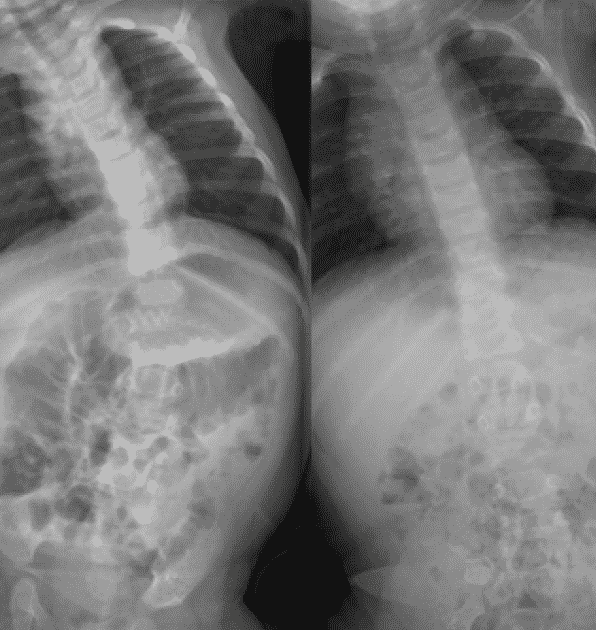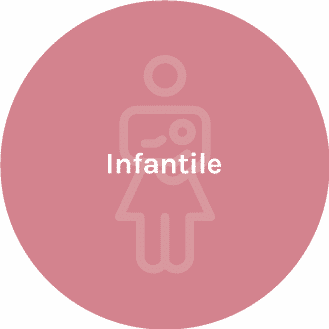Infantile bracing

Unexplained scoliosis in children under the age of 3 is called, Infantile idiopathic scoliosis. While it is relatively rare and only affects only a small proportion of infants it can have a devastating consequences if left untreated. Once any serious underlying pathology is ruled out as a cause of infantile idiopathic scoliosis, it is divided up into two basic types; progressive infantile idiopathic scoliosis or resolving infantile idiopathic scoliosis [2]. Resolving infantile idiopathic scoliosis as the name suggests resolves spontaneously. This accounts for approximately 80% of infantile scoliosis cases. Infants with a progressive infantile idiopathic scoliosis continue to worsen and often develop a severe scoliosis in a relatively short time.
So how do you tell if your child has resolving or progressive infantile idiopathic scoliosis? Initially when the curve is small it is very difficult to tell if the infantile scoliosis is going to be progressive or resolving. As a rule of thumb if the scoliosis curve measures under 20 degrees of cobb angle it is normally considered a potentially resolving case and observation is normally recommneded. If the curve is larger that 20 degrees of Cobb then it may or may not be be progressive, however their is a way to tell if there is a chance that the scoliosis still has the potential to resolve or not.
While the Cobb angle gives an indication of the amount of curvature it does not give an accurate indication as too how much deformation has occurred in the spine and ribs. This is important because once there is significant deformation the scoliosis can not self resolve. A special measurement called the rib vertebral angle difference is (RVAD) is used to determine if the infantile scoliosis has a chance of resolving. If the RVAD is significant it means there is little to no chance that the scoliosis can resolve and in these cases serial casting is usually recommneded.
Serial casting is an effective treatment in many cases of severe scoliosis. Unfortunately however the procedure requires a general anesthetic and serial anesthetics have been show to affect brain development in some cases.
While research into bracing infantile scoliosis is still growing, bracing may be a potential treatment for those cases that have a Cobb angle more than 20 degrees and a moderate RVAD. There is case study and case series evidence that shows these patients do resolve while under brace treatment. Of course it is possible that some of these cases may self resolve, but for those parents that do not want to watch and wait to see if their child’s infantile scoliosis will self resolve then part time, 3d over corrective bracing may be a viable option.


